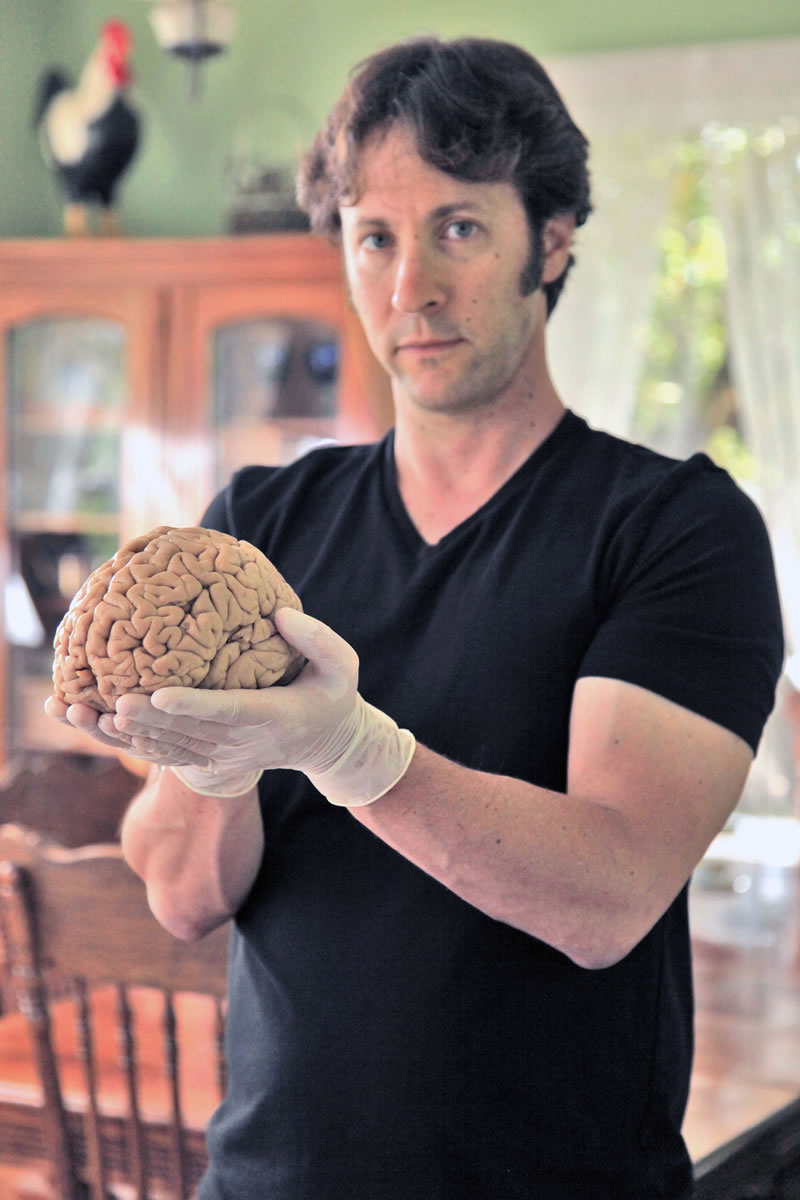BEVERLY HILLS, Calif. — The last great unknown territory on Earth doesn’t lie at the bottom of the sea or in the Arctic Circle or in the molten Earth’s core, but right here in the human brain.
That’s what neuroscientist Dr. David Eagleman says in his new PBS series, “The Brain with David Eagleman,” airing Wednesdays.
“The way we structured these six episodes, they’re all about the big questions,” he says in a conference room here.
“What is reality? Who am I? How do I decide? Who’s in control? Who will we be? These are questions that happily are evergreen, so we don’t have to worry about some new piece of data coming along next year that will suddenly overturn this question of what is reality.”
One of the major puzzles that has confounded man since Aristotle is how we comprehend the world.
“Your entire reality takes place in this closed theater of your brain,” says Eagleman, who holds joint assignments in neuroscience and psychiatry at Baylor College of Medicine in Houston.
“And it, at various times, has more or less to do with what’s happening in the outside world. And what can happen, for example, when you go to bed and dream at night, is that the theater keeps running, and the actors keep acting, and you have this whole virtual reality that you take to be reality. And the same thing happens as somebody becomes demented. There are many different aspects to dementia, but one of the issues is that somebody can confuse what’s real. It has less and less anchoring to the outside world.”
One of the most interesting studies regarding Alzheimer’s disease revealed that what we do as we age has a profound effect on the brain’s function. “One of the things we cover on the show has to do with a very fascinating study about hundreds of nuns and priests who all agreed to donate their brains upon their death,” says Eagleman.
“And this has been going on for a number of years now. And the researchers were really surprised when they discovered that about a third of the brains, when they looked at them under the microscope at autopsy, had the signs of Alzheimer’s disease in them.
“In other words, the tissue was being ravaged by Alzheimer’s. And yet, NONE of the cognitive symptoms were apparent when the people were alive. Why? It’s because, for example, the nuns who lived together in these convents keep very cognitively active. They’re cognitively fit because they’re socializing. They’ve got tasks. They’re doing things. As opposed to many people who, for example, retire and sit around and don’t do much of anything and then they have cognitive decline. So this has led to a new concept which we cover in the show about cognitive reserve. If you keep your brain active, you’re making new pathways. You’re finding new ways to get from A to B even as parts of the tissue are dropping out.”
He points out that music can play a part in helping people recover their ability to speak and has been used to treat those with Parkinson’s disease. “Because music is stored differently than language, it can sometimes help spur speech. And the other place music is used a lot is in Parkinson’s disease where somebody will sort of be frozen in terms of his motor acts, but you can play music, and you play a beat, and then they can move to that.”
Eagleman, 44, thinks the idea of the dominance of one side of the brain over the other is mostly overrated. “It’s almost to the point of an old wives’ tale in the sense that there’s a little bit of difference between the hemispheres. The left hemisphere in most people has language in it, and that’s what’s special about it. But, otherwise, the idea of a big difference between left and right brain isn’t so true … There’s a girl in the show named Cameron Mott who had a particular kind of epilepsy where the only solution was to remove in a neurosurgery half of her brain.”
A CAT scan reveals one side of her brain is just blacked out. “If you do that kind of surgery under the age of 8, a child will be totally fine. All of the functions that would have been taken care of with the other hemisphere get mapped onto the single remaining hemisphere, and the person’s just fine. You can’t do that in an adult. They’ll die. But children’s brains are sufficiently plastic,” he says.
Unlike some other TV shows that concentrate on the aberrations of the brain, this one examines the normal brain, says Eagleman.
“Aside from dealing with the legal system and things like that, I’m also in a whole episode dealing with the issue about the social brain and how so much of our circuitry is devoted towards other brains and dealing with other brains.”



